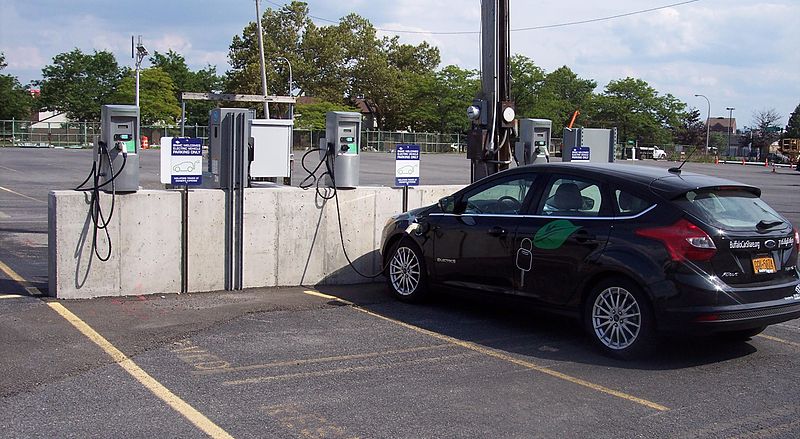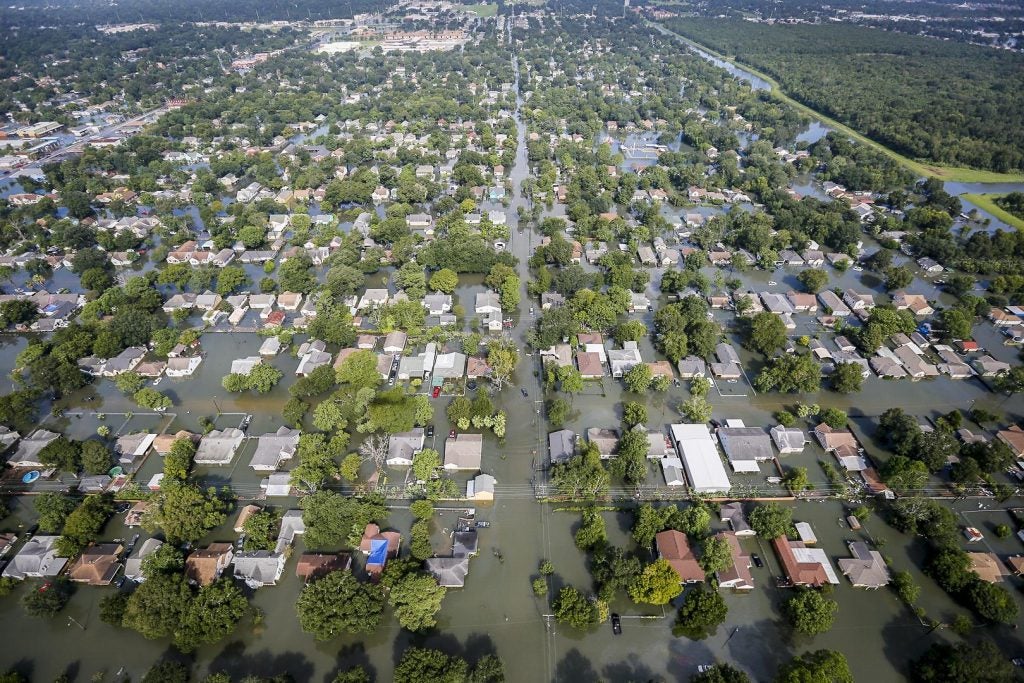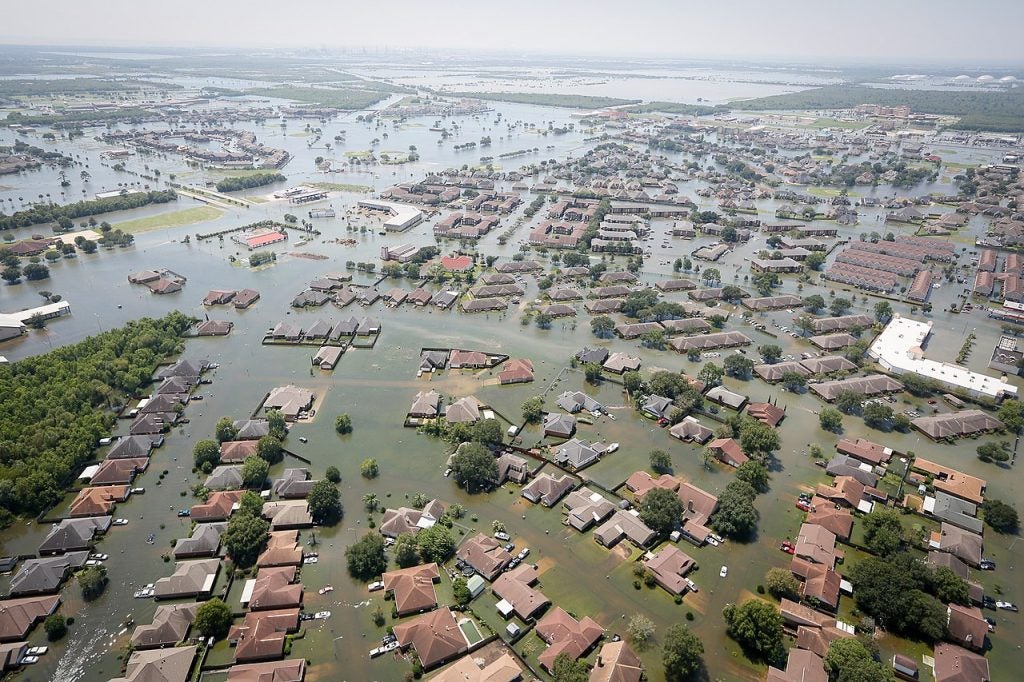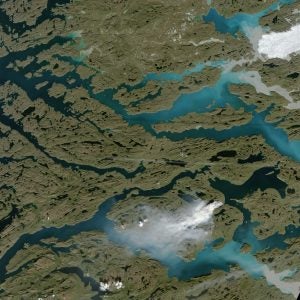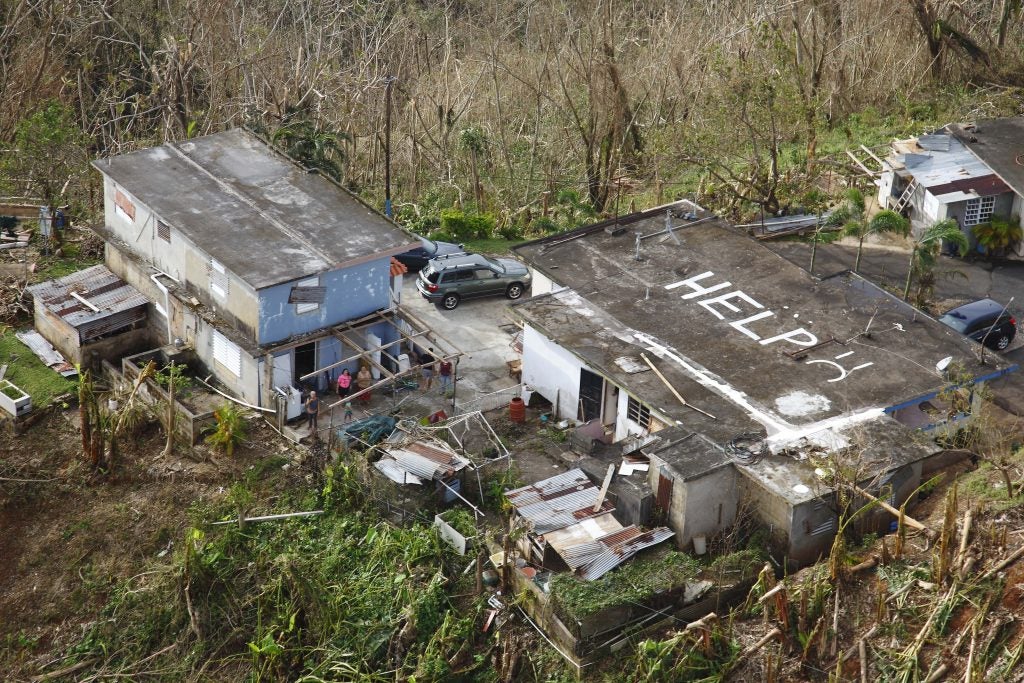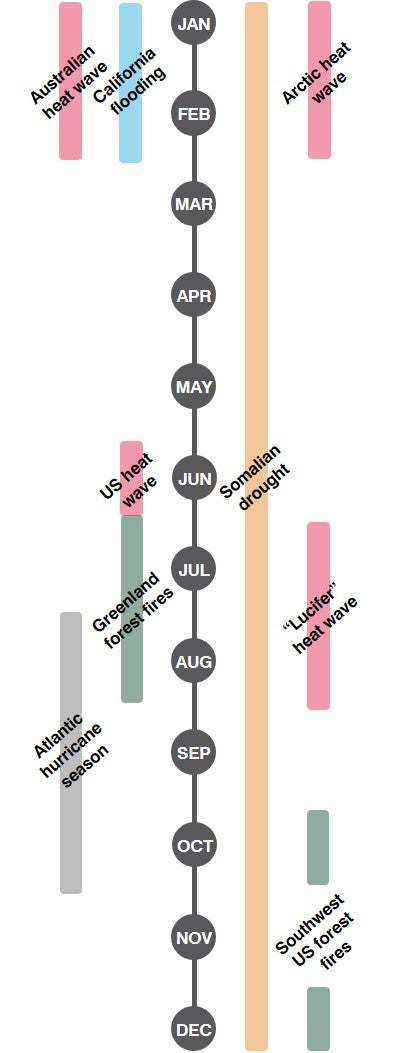
Diesel pollution from a freight truck in 2008. Pruitt is proposing a loophole that would allow new trucks to evade modern clean air protections by using high-polluting old engines like this one. Photo: EPA
The U.S. Environmental Protection Agency (EPA), led by Administrator Scott Pruitt, is proposing to roll back important safeguards and allow certain heavy-duty freight trucks – commonly known as “glider trucks” – to evade modern pollution standards.
Rolling back these protections would have terrible impacts for human health, including as many as 4,100 premature deaths in 2025 alone. Glider trucks can emit harmful pollution at a rate up to 450 times that of other new freight trucks. So the broad chorus of opposition from the public – including from EDF – is no surprise.
But you might be surprised by who else is strongly opposing EPA’s proposal.
Every segment of the freight industry — truck manufacturers, fleet owners, freight shippers and other stakeholders — has spoken out to oppose this rollback.
These industry stakeholders recognize that Pruitt’s proposal would undo decades of progress in cleaning up pollution from heavy-duty freight trucks. Moreover, it would undermine their significant investments in pollution control innovation.
The proposed rule would create a loophole for the small segment of the freight truck industry that manufactures super-polluting glider trucks, which use old diesel engines that are not equipped with modern pollution controls — and the loophole would be at the expense of other truck manufacturers and dealers who play by the rules.
These freight truck industry words speak for themselves – EPA needs to reverse course on this deeply damaging proposal:
TRUCK DEALERS
The National Automobile Dealers Association, as well as numerous individual truck dealers, have expressed opposition to the proposal.
TriState Truck Center, based in Memphis, Tennessee and employing about 400 people:
“We have been a heavy duty dealer for 72 years. I have personally worked here since 1972. I remember the days years ago when our truck shop was so thick with the exhaust from the trucks that you could not see the other side of our shop. Today, our shops are clean and exhaust free due to the new EPA compliant engines. Do we really want to go back to those days? That’s what more glider kits will do with engines that are both obsolete and environmentally unfriendly.” — Public Comment of TriState Truck Center
MANUFACTURERS
Daimler Trucks North America, a leading manufacturer of heavy-duty vehicles in the United States, opposes the proposed rule despite being a major supplier of glider kits:
“[T]he EPA’s proposed revisions to the glider rules would undermine the investments that DTNA and Detroit Diesel Corporation — and all other U.S. manufacturers — made in advanced technologies and exhaust after treatment, while opening the vehicle and engine markets to manufacturers who find simple options to skirt EPA regulations altogether and market high emitting engines or vehicles.” – Public Comment of Daimler Trucks North America
The Volvo Group, one of the world’s leading manufacturers of heavy-duty trucks, and direct employer of more than 13,000 Americans:
“A repeal of the Phase 2 glider provisions will make a mockery of the massive investments we’ve made to develop clean diesel technology. Any relaxation of the production caps is unnecessary and would exacerbate the negative competitive and environmental impacts from the glider industry. It’s imperative that the Agency ensure that all actors are playing by the same set of rules.” — Public Comment of the Volvo Group
The Alliance of Automobile Manufacturers, whose members include major car companies including Ford, General Motors, and Toyota, opposes the proposal and says this rule could have implications far beyond glider vehicles, resulting in drastic increases in air pollution from other motor vehicles:
“One glaring (and perhaps unintended) result of the Proposed Repeal is that any auto or engine manufacturer (or its customer) could circumvent EPA’s GHG regulation of new motor vehicles and new motor vehicle engines merely by incorporating a few used components into their finished products …Vehicle manufacturers or builders of ‘kit vehicles’ could attempt to avoid compliance with emission standards in their entirety by incorporating used powertrain components into their vehicles. A circumvention of criteria pollutant standards in this way would adversely affect public health and run contrary to other EPA efforts to promote low on-road emissions.” — Public Comment of Auto Alliance
The Truck and Engine Manufacturers Association (EMA), representing leading global manufacturers of heavy-duty and medium-duty vehicles and engines including Honda, Caterpillar, Cummins, Ford, General Motors, Navistar, Volvo, and Yamaha:
“[S]uch a loophole would be especially damaging to EMA’s members who have invested hundreds of millions of dollars in advanced technologies – technologies that make them the world’s leaders in the manufacture of new heavy-duty and medium-duty on-highway engines and vehicles. EPA’s loophole would open the door for other manufacturers (that have not made the same investment) to enter the U.S. marketplace, even with used engines that have no advanced emission-control systems whatsoever.” — Public Comment of EMA
PACCAR is a manufacturer of medium- and heavy-duty trucks and engines, including a major manufacturer of glider kits. Even PACCAR, which would be able to sell glider kits through the proposed loophole, acknowledges the harmful implications of EPA’s proposed rule:
“PACCAR supports the comments submitted by the Truck and Engine Manufacturers Association (EMA) regarding EPA’s interpretation of the CAA used in this NPRM. In particular, PACCAR agrees with EMA that EPA’s interpretation of CAA Section 202(a)(1) will create a loophole that could … lead to traditionally ‘new’ engines being built with one or more refurbished parts in order to avoid being regulated to the current CAA emissions requirements.” — Public Comment of PACCAR
The National Association of Manufacturers (NAM), the nation’s largest manufacturing association representing nearly 14,000 small, medium, and large manufacturers in every industrial sector and in all 50 states:
“The framework created by the existing [2016 HDP2] regulations strikes an appropriate balance without creating a competitive disadvantage for manufacturers that comply with GHG standards. . . . [T]he proposed repeal of the glider vehicle requirements from the Phase 2 rule could have unintended consequences that affect the market for new heavy-duty vehicles.” — Public Comment of NAM
FLEETS AND SHIPPERS
UPS, which owns the largest truck fleet in the U.S.:
“Allowing gliders to remain unchecked as to fuel economy and emissions means that the cleanest heavy truck fleets in the nation will keep paying the price for clean air, while gliders don’t. In short, before asking [for] more improvements in the best-of-the-best trucks, EPA should pursue cleaner emissions in trucks that are already the worst-of-the-worst in emissions.” — Public Comment of UPS
The American Trucking Associations, which represents more than 34,000 companies, convened a Fuel Efficiency Advisory Committee comprised of leading truck fleets from across the country, including UPS, Wal-Mart, PepsiCo, and Penske Truck Leasing. The committee voted unanimously “to oppose any attempts to repeal the glider provisions in the [2016] final Phase 2 rule.”
“Our members have worked together tirelessly in support of technologies and programs that have resulted in the production and adoption of the cleanest and most fuel-efficient diesel trucks ever. EPA’s decision to allow the unchecked growth of the glider market and encourage the continued sale of antiquated engine technologies grossly undermines the investment decisions of thousands of companies, organizations, and businesses.” — Public Comment of American Trucking Associations
The Ceres BICEP Network (Business for Innovative Climate & Energy Policy) is comprised of leading companies such as Adobe, eBay, IKEA, L’Oreal, Nike, The North Face, Patagonia, Sierra Nevada Brewing, and Unilever:
“It is important to us that the transportation of our goods does not result in negative public health impacts, and we believe that those trucking companies that have invested in clean technologies, and those companies that use them, should not be penalized. Given that this proposal will result in significant harm to public health, and undermine a level playing field for those who support clean technologies, we strongly oppose this proposal.” — Public Comment of BICEP










